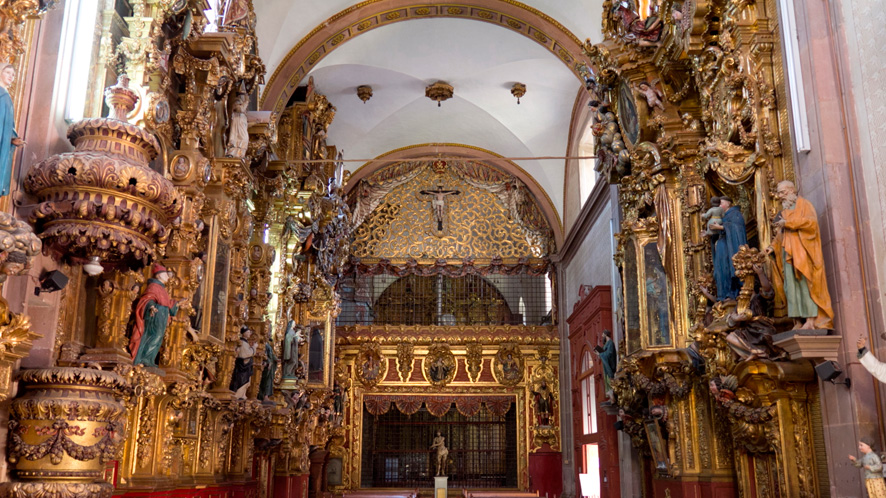The Temple of Santa Clara was built by Don Diego de Tapia, son of the founder of Querétaro, Don Fernando de Tapia, also known by his indigenous name “Conín”.
At the beginning of the 17th century, he was the owner of a large fortune and father of a daughter named Marie Louise; he was convinced that he would found a convent of Poor Clare nuns and that his daughter would take up the habits of this order. On January 8, 1606, the deeds were notarized for the foundation of the convent, through the initial contribution of 50,000 pesos and the necessary for its maintenance.
During the viceroyalty was one of the largest and most important convents in New Spain, but today only the church and a small annex remain, as much of it was destroyed during the War of Reform.
When the War of Independence began, it served as a prison for Doña Josefa Ortiz de Domínguez.
The convent building occupied an extension of three blocks, in the current streets of Madero, Allende, Guerrero and Hidalgo, of which only the temple remains standing, which shelters in the nave six splendid altarpieces from the eighteenth century and one from the nineteenth century, in addition to canvases, sculptures and altarpieces in the choirs and other smaller ones in the sacristy, the baptistery and other rooms.
There are still vestiges of the first temple, the façade of one of the 13 chapels inside, the convent’s porter’s lodge and the main cloister space occupied today by the Federation Courts.
The current church of Santa Clara was completed on August 12, 1668 and became the seat of the Sacred Heart Parish in 1921.
The temple has a museum-gallery, located on Calle Allende 1, on the corner of Madero and Calle Allende. There you will find a wide range of articles such as photographs and books about the place.
Location: Calle Francisco I. Madero 42, Querétaro, Querétaro.

